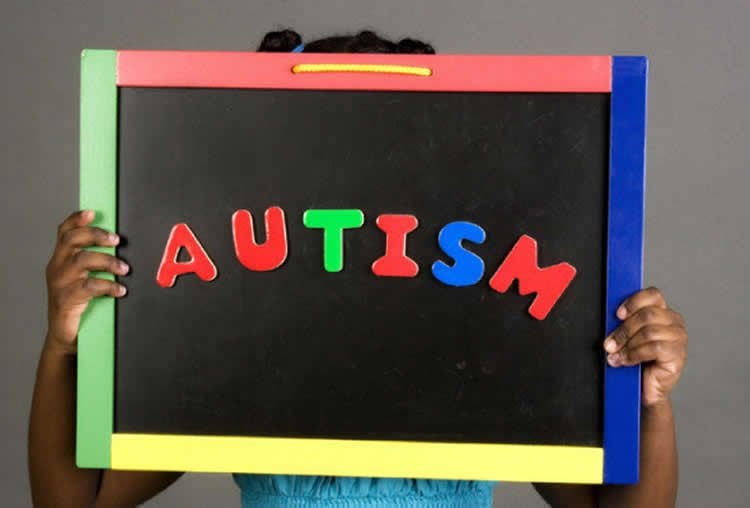Summary: Researchers have devised a new technique that could help to provide an early diagnosis of autism. By measuring a set of proteins in the blood, researchers were able to diagnose ASD with 82% accuracy.
Source: UT Southwestern.
Measuring a set of proteins in the blood may enable earlier diagnosis of autism spectrum disorder (ASD), according to a study from the Peter O’Donnell Jr. Brain Institute at UT Southwestern Medical Center.
The research found that the levels of two proteins previously identified as potential markers for ASD could help scientists accurately diagnose the disorder in approximately 75 percent of the children studied. When the two proteins are measured together, the diagnostic accuracy increased to 82 percent.
The study published in the Journal of Neuroinflammation is among several recent and ongoing efforts to improve early diagnosis of ASD by shifting focus to biological measurements instead of behavioral symptoms.
Progress in this area could lead to earlier intervention and help limit the effects of the disorder, said Dr. Dwight German, study senior author and Professor of Psychiatry at UT Southwestern.
“ASD is a very heterogeneous disorder, and if we can identify biomarkers for even a subgroup of ASD patients, then that would be extremely helpful not only for early diagnosis but also for the development of therapeutics,” said Dr. German, whose latest research builds upon an ASD finding published last year in Scientific Reports.

ASD affects approximately 1 in 68 children in the U.S. The neurodevelopmental disorder is characterized by social interaction and communication challenges, and restricted and repetitive patterns of behavior.
Most cases are not diagnosed until about age 4, when communication and social disabilities become apparent. However, recent research offers hope that detection may be possible by age 1 by measuring brain growth.
Funding: Dr. German’s study was supported with funding from the Ted Lindsay Foundation in collaboration with Dr. Laura Hewitson at the Johnson Center for Child Health and Development in Austin, Texas.
Source: James Beltran – UT Southwestern
Image Source: NeuroscienceNews.com image is in the public domain.
Original Research: Full open access research “Serum thyroid-stimulating hormone and interleukin-8 levels in boys with autism spectrum disorder” by Sarika Singh, Umar Yazdani, Bharathi Gadad, Sayed Zaman, Linda S. Hynan, Nichole Roatch, Claire Schutte, C. Nathan Marti, Laura Hewitson and Dwight C. German in Journal of Neuroinflammation. Published online May 24 2017 doi:10.1186/s12974-017-0888-4
[cbtabs][cbtab title=”MLA”]UT Southwestern “Possible Early Diagnosis of Autism Spectrum Disorder.” NeuroscienceNews. NeuroscienceNews, 30 June 2017.
<https://neurosciencenews.com/early-autism-diagnosis-7014/>.[/cbtab][cbtab title=”APA”]UT Southwestern (2017, June 30). Possible Early Diagnosis of Autism Spectrum Disorder. NeuroscienceNew. Retrieved June 30, 2017 from https://neurosciencenews.com/early-autism-diagnosis-7014/[/cbtab][cbtab title=”Chicago”]UT Southwestern “Possible Early Diagnosis of Autism Spectrum Disorder.” https://neurosciencenews.com/early-autism-diagnosis-7014/ (accessed June 30, 2017).[/cbtab][/cbtabs]
Abstract
Serum thyroid-stimulating hormone and interleukin-8 levels in boys with autism spectrum disorder
Background
Autism spectrum disorder (ASD) affects approximately 1 in 68 children in the USA. An ASD blood biomarker may enable early diagnosis and/or identification of new therapeutic targets. Serum samples from ASD and typically developing (TD) boys (n = 30/group) were screened for differences in 110 proteins using a multiplex immunoassay.
Results
Eleven proteins were found that together could confirm ASD with modest accuracy using multiple training and test sets. Two of the 11 proteins identified here were further tested using a different detection platform and with a larger sample of ASD and TD boys. The two proteins, thyroid-stimulating hormone (TSH) and interleukin-8 (IL-8), have been previously identified as putative biomarkers for ASD. TSH levels were significantly lower in ASD boys, whereas IL-8 levels were significantly elevated. The diagnostic accuracy for ASD based upon TSH or IL-8 levels alone varied from 74 to 76%, but using both proteins together, the diagnostic accuracy increased to 82%. In addition, TSH levels were negatively correlated with the Autism Diagnostic Observation Schedule subdomain scores.
Conclusions
These data suggest that a panel of proteins may be useful as a putative blood biomarker for ASD.
“Serum thyroid-stimulating hormone and interleukin-8 levels in boys with autism spectrum disorder” by Sarika Singh, Umar Yazdani, Bharathi Gadad, Sayed Zaman, Linda S. Hynan, Nichole Roatch, Claire Schutte, C. Nathan Marti, Laura Hewitson and Dwight C. German in Journal of Neuroinflammation. Published online May 24 2017 doi:10.1186/s12974-017-0888-4







